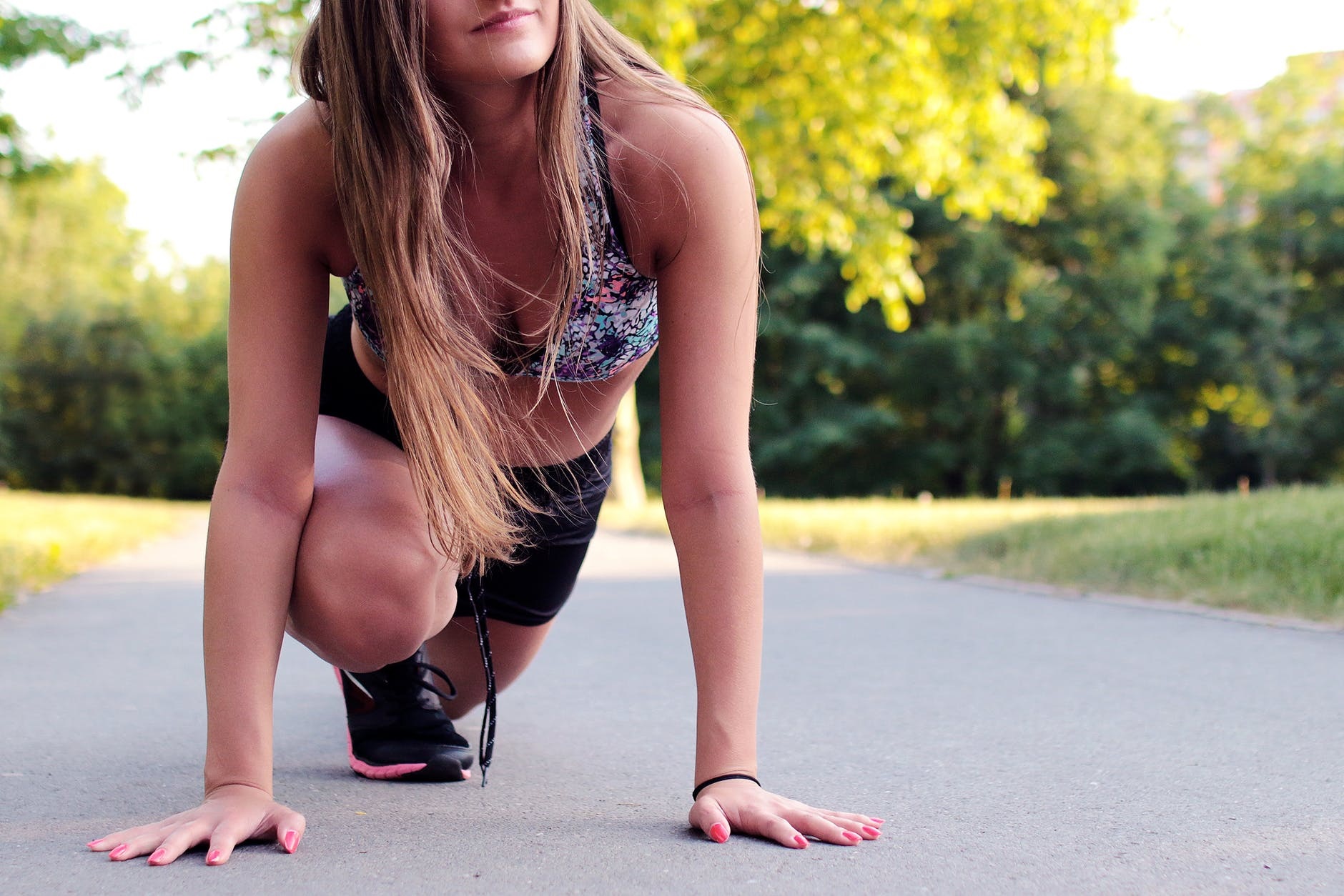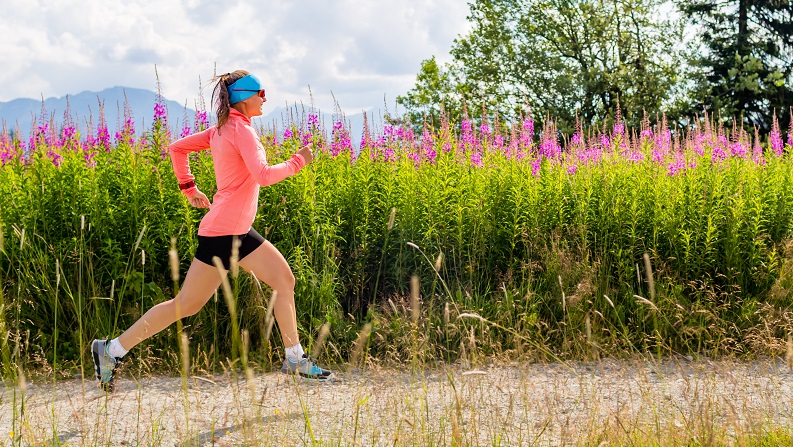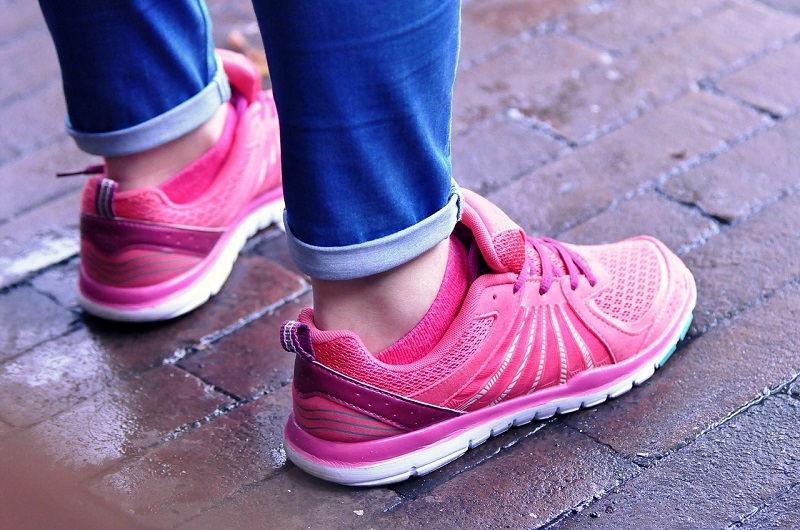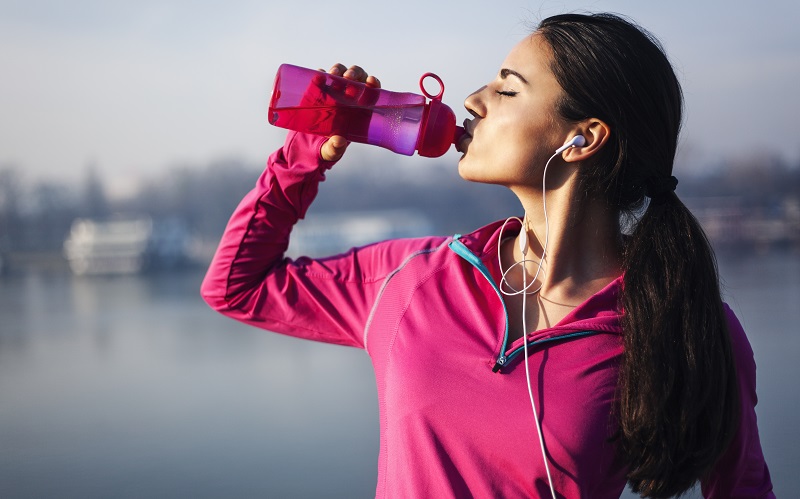
Our Editors independently research, test, and rate what we feel are the best products. We use affiliate links and may receive a small commission on purchases.
Running is one of the most effective and popular cardio exercises available. While having a treadmill in your home to be able to run when the weather isn’t cooperating with you is helpful, there’s nothing like getting out of the house, enjoying Mother Nature around you, and pushing hard toward your ultimate running goals.
If you truly want to take your running game seriously, it’s important to have all the right tools at your disposal. Throughout this guide, you’ll learn just what you need to get started as a runner and how to choose the best gear for your needs.
Getting Started
Out of all the dozens of cardio exercises available to you, running requires the least amount of investment and prep. When you compare the amount of use you can get from the gear you purchase to start running, you may also realize that running for cardiovascular exercise will always give you more bang for your buck.
Pro Tip: Consider joining a running club to meet other runners for inspiration and encouragement.
But it’s important to have the tools you need before you set out for your first run. Even having the wrong running shoes can get you started off on the wrong foot, literally.
Let’s learn more.
Invest in the Best Running Shoes
Shoes that are designed for the sole purpose of running help you to run with the right stride and can lessen the impact of your footfalls on your ankles, knees, hips, and lower back.
They can also give you the proper amount of cushion within the insole as well as outsole. Running with regular sneakers, tennis shoes, or other such shoes can contribute to an acute, sudden injury or a chronic injury that develops over time.
What injuries are possible? Let’s learn more.
Potential Injuries
While some of the injuries you can sustain while running are minor and may just need some rest so your body can repair itself, there are several running injuries that are common but harder or near impossible to fix.
The Achilles tendon, the one from your back of your heel to the back of your ankle, can sometimes feel swollen and achy. These symptoms are usually caused by Achilles tendinitis.
Plantar fasciitis is another common injury but there may not be a simple way to solve the problem other than wearing shoes that are designed to relieve the symptoms and still allow you to run.
Here is a list of several other common running injuries.
- Runner’s knee
- Shin splints
- Hamstring soreness
- Stress fractures
All of these may be prevented, or the damage at least lessened, by wearing the best running shoes for you. Which are the best? Let’s take a look.
Types of Running Shoes
While there are shoes that are made just for running that aren’t designed for a specific type of running, you may want to look at shoes that offer the best benefit for your running style.
For example, trail running is very different than running in a park or around the block on sidewalk. Trail running shoes are designed to give you the traction you need so you can push yourself to your very limit.
Minimalist or barefoot running shoes are often used for trail running as well, but there’s no saying you can’t use them for other running sports. These types of shoes are designed to give your foot a more natural stride.
If you are an under- or overpronator, meaning you either have a low arch or a high arch, you may want to look for running shoes that can help create a more neutral and stable position for your foot.
There are usually shoes designed for specific sports activities. For example, running shoes fall under the category of athletic shoes. There are also shoes for court activities such as tennis or basketball and field shoes for sports such as soccer and football.
You’ll want specifically designed shoes for golfing, cycling, dancing, and more just to name a few.
There’s a Running Shoe Out There for You
As we mentioned above, there are running shoes for a high arch as well as running shoes for flat feet. Choosing a shoe for the natural shape of your foot will help to prevent other injuries such as generalized heel pain.
Heel pain can be caused by many things, including heel spurs or an improper stride that puts a large part of the impact during your footfall on your heel. Choosing running shoes for heel pain can help minimize the discomfort you feel so you get the most out of your run.
There are many who have feet that are wider than the average and it’s important to buy running shoes designed for wide feet if this applies to you. Squeezing your foot into a running shoe that is too narrow can be quite uncomfortable and cause injury.
If you already have a running injury or an injury pre-existing, there are running shoes available that can help minimize further damage and make it possible for you to be the runner you wish to be. For example, there are running shoes for bad knees, whether your bad knees were caused by a previous injury or even arthritis.
Many are also susceptible to plantar fasciitis and may already suffer from it before deciding on being a runner. The best running shoes for plantar fasciitis will help support the plantar tendon on the bottom of your foot.
Shin splints are something that many runners experience at one point or another, but if you find that shin splints are a more common occurrence for you, there are running shoes for shin splints that can help minimize the chances of getting them.
Choosing the right pair of running shoes for you may even help reduce the symptoms of pre-existing conditions, allowing you to run, engage in other sports activities, and more. What shoes are right for you?
Always Stretch & Warm Up
Just as with any exercise it’s important to stretch and warm up before beginning. By stretching, your muscles won’t be as tight. Tight muscles cause muscle cramps and other discomfort. Warming up your muscles before engaging in a strenuous exercise such as running prepares them for the physical exertion of your workout.
Here are some of my favorite running stretches and warm-ups.
To warm up, go for a slow walk or jog for 10 to 15 minutes. If your muscles start to tense up, either slow your pace or stop for a few stretches.
The walking lunge is one of the most popular running stretches. Starting with your right foot approximately 3 feet behind your left foot, keep both feet pointed straight ahead. Bend your knees slowly without letting your right knee touch the ground.
Hold for 5 to 10 seconds, then take a step forward with your right foot leaving your left foot behind you. Bend your knees once again without letting your left knee touch the ground, holding for 5 to 10 seconds. Repeat the walking lunge movements for a total of 8 to 10 steps.
To help stretch your hips, start with the stance of the walking lunge. Instead of bending both knees at the same time bend the knee in front while you keep the back straight. Remember to keep both feet pointed straight ahead. Hold the position for 5 to 10 seconds for each side. Keep alternating to stretch the left and right legs 2 to 3 times each.
To target your calves, stand on your toes on the edge of a stair or curb. Let your heels drop past the height of the ledge. Then push up with your toes to raise up. Repeat this process several times until you feel the warmth in the backs of your legs.
There are many more warm-ups and stretches for runners. Be sure to find the right pre-run routine for you.
Running Apparel for Every Season
Stretching before your run is important, but wearing the right clothing for the activity and the weather is just as important. Running apparel is designed to let you move comfortably whether you’re running fast or slow. They also help to prevent chafing and other uncomfortable irritations.
It’s important to have running apparel for warm weather and different options for when it’s chilly. Usually, the same running outfit won’t work for both. Let’s take a look at some options.
Warm Weather Running
Most runners wear a good pair of running shorts along with a lightweight tank top or T-shirt. Running shorts are available made of spandex and other stretchy materials to give a closer fit. You can also find running shorts that are looser in the leg. The type, color, and fit are completely up to you and what you’re more comfortable with when running.
Don’t Let the Cold Stop You
Just because it’s cold outside doesn’t mean that you get a break from your running routine. In fact, it should get you pumped for a great run.
The dedication you have during the winter months will pay off in the results you see. However, it’s important to be prepared with the right running apparel that can keep you warm while not being overly constrictive.
It’s important to invest in a good running jacket. This jacket will keep you warm without making you sweat. Sweating while outdoors in chilly weather can leave you more susceptible to illnesses such as a cold, bronchitis, or sinus infection. Having a great pair of running gloves is also a necessity.
These gloves will keep your hands warm while still able to reach into pockets or bags, change the playlist on your music player, or grab your favorite hydration beverage.
Running with the Whole Family
There’s no reason why running has to be a solo affair. It’s possible to bring the whole family with you on your runs. You may think it would be a little more difficult to go on a run with your younger ones.
A stroller designed specifically for running can also help. A double jogging stroller will allow you to bring two younger children with you or take along a change of clothes. Older kids may be able to run alongside you, just be aware that they may not have as much stamina as you do so taking frequent breaks is recommended.
What are the benefits of bringing your whole family on a run?
- The kids get to exercise as well
- The family gets to do something positive together
- Everyone gets some fresh air
- You don’t have to find a babysitter
- Everyone gets away from cell phones, tablets, computers, and TVs
Essential Hydration
Sometimes it’s not feasible to carry a water bottle with you. While some runners like to carry a bottle of water or a sports drink at their waste with a running belt, there are many other options available.
For example, running hydration vests allow you to have your hands free and allow you to keep your pace while still getting the hydration you need. There are also hydration backpacks available. Keeping hydrated while running, especially outdoors, is important.
Once you become dehydrated it can take much longer to recover from your run. It can also cause headaches and other unpleasant symptoms.
Be sure to stay hydrated no matter which method of carrying water or a sports drink with you that’s the best for you.
Find Every Path, Trail, Track, or Route!
Whether you plan on taking quick jogs around your normal route or you are training for a running event such as a 5K or even a marathon, having the right gear is essential. Start with finding the right shoes for you, learn how to warm up and stretch properly, then dress appropriately for the weather.
With everything you need to get started running, there’s no holding you back.




